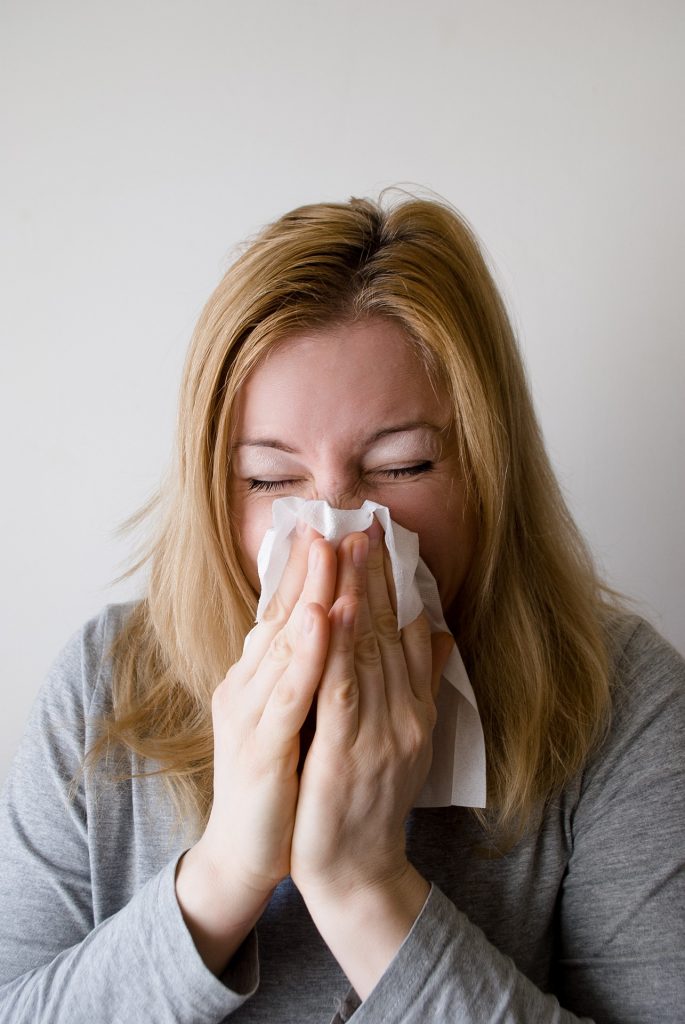Does Cold Winter Weather Make You More Likely to Get Sick?

It’s such a simple question and yet there are strong opinions on both sides. Obviously, more people get sick in winter, but is that from cold temperatures or other factors? Arguments against cold exposure causing respiratory infections are often based on two studies from the 1950s and 1960s.
Earlier Research
The first study exposed volunteers to a cold virus under different temperature conditions: 10 degrees, 60 degrees and 80 degrees Fahrenheit. Subjects exposed to 10 degrees were given a coat, hat and gloves, while the 60 and 80 degree exposed participants wore shorts and underwear. Subjects were exposed to the temperatures for 2-4 hours. The study found no increased infections with a combination of cold and cold virus exposure (Dowling 1958).
Unfortunately, this study had some flaws. The exposure time may have been too brief. In addition, cold exposure was under very high humidity, 80%. Some of the latest research on correlations between weather conditions and respiratory infections show that cold temperature and low humidity may be key (Jaakkola 2014, Makinen 2009). More on that later.
Another study done on jail inmates also tried to unravel whether cold temperatures affected susceptibility and immune response to cold virus exposure (Douglas 1968). Subjects were exposed to 50 degree or 39 degree temperatures, 90 degree water bath immersion, or both. The study included 44 volunteers. However, individual groups were quite small, some exposure groups being 2-3 individuals. Even the largest group of 9 inmates exposed to 39 degree temperatures was subdivided into three groups each exposed to different amounts of virus. Having such small groups makes drawing any significant conclusions difficult.
In addition, they used 50% humidity, which might be high enough to decrease the effects of cold temperatures on getting sick. The study concluded there were no effects of cold on illness, yet they showed a definitive decrease in neutrophils, the white blood cells involved in early immune response in inmates exposed to cold. The study, in my opinion, is not conclusive due to the outlined shortcomings.
More Recent Research

Some of the latest research on infection risk and cold exposure show correlations with temperature and illness. A review in 2007 noted that evidence was not in complete agreement, yet still suggested that cold exposure increases your risk of respiratory tract infections and death. They also noted that the longer the exposure, the higher the risk, suggesting a relationship (Mourtzoukou 2007)
A more recent review in 2015 looked at different types of cold exposure and respiratory tract infections. They found studies that appeared to indicate that breathing cold air or chilling the body caused increased respiratory infections. However, they didn’t find any research supporting that eating cold food or drink, or episodes of low body temperature increased risk (Eccles 2015).
There are also the studies mentioned earlier showing increased risk of infections with decreasing temperature and humidity (Jaakkola 2014). For influenza, a 1.8 degree (Fahrenheit) drop increases risk by 11% and a 2.2% decrease in humidity increases risk 58%. In addition, an earlier study on general respiratory tract infections showed an increased risk of 4.3% with each 1.8 degree decrease in temperature. They also showed increased infection risks of 10% for each 4.4% decrease in humidity (Makinen 2009). While none of this is completely definitive, the research is suggestive that cold and dry weather conditions worsen respiratory infection risk.
What About Indoor Air?
Indoor air quality may also affect infection risk. When humidity is consistently above 60%, you have increased risk for mold growth. In damp homes with high humidity, mold can create significant problems. A review article showed that damp and/or moldy homes increased risks of respiratory infections by a factor of 1.44 (Mendell 2011).
Estimates suggest between 18% and 50% of all buildings have problems with high humidity (Gunnbjornsdottir 2006, Mudarri 2007). Even without mold, long-term exposure to damp indoor air appears to increase risks.
While not a perfect solution, having a humidity meter in your home can help identify problems. If readings are consistently over 60%, you likely need to take action to reduce humidity levels.
Conclusions
Based on my reading of the latest research, cold and dry winter weather may increase the risk for colds and flu. In addition, exposure to damp indoor air increases risks as well. Keeping indoor humidity levels between 40-60% when possible, is typically best for overall health (Wolkoff 2018).



